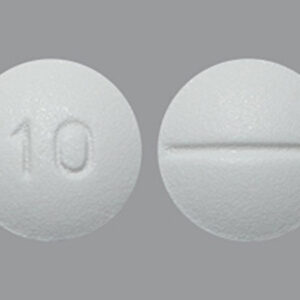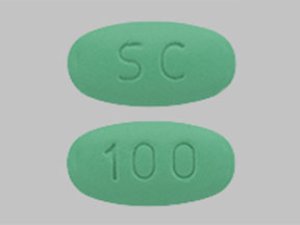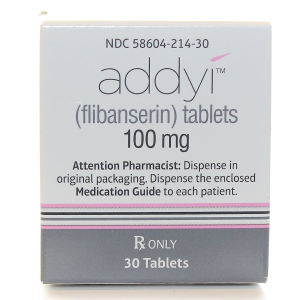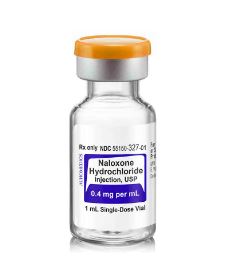Delivery Method: VIA Electronic Mail Reference #: 320-26-18 Product: Drugs Recipient:
Recipient Name
Ms. Manorama Avinash
Recipient Title
Executive Director
Cdymax India Pharma Private Limited
77d & 116/117, KIADB Industrial Area
Jigani
Bangalore 560105
Karnataka
India
manorama@cdymax.in Issuing Office: Center for Drug Evaluation and Research (CDER)
United States
Warning Letter 320-26-18
November 13, 2025
Dear Ms. Avinash:
The United States Food and Drug Administration (FDA) inspected your drug manufacturing facility, Cdymax (India) Pharma Private Limited, FEI 3009882550, at 77d & 116/117, KIADB Industrial Area, Jigani, Bangalore, Karnataka, from April 21 to 25, 2025.
This warning letter summarizes significant deviations from Current Good Manufacturing Practice (CGMP) for active pharmaceutical ingredients (APIs).
Because your methods, facilities, or controls for manufacturing, processing, packing, or holding do not conform to CGMP, your APIs are adulterated within the meaning of section 501(a)(2)(B) of the Federal Food, Drug, and Cosmetic Act (FD&C Act), 21 U.S.C. 351(a)(2)(B).
We reviewed your May 15, 2025, response to our Form FDA 483 in detail and acknowledge receipt of your subsequent correspondence.
During our inspection, our investigator observed specific deviations including, but not limited to, the following.
1. Failure to adequately investigate and document out-of-specification results and implement appropriate corrective actions.
Your firm manufactures APIs for incorporation into application drug products, including those intended for use in (b)(4) drug products for parenteral administration. You failed to adequately investigate multiple out-of-specification (OOS) results and laboratory incidents during the testing of various samples, including raw materials, starting materials, and stability samples.
Since 2023, your firm has experienced approximately 1,500 laboratory incidents involving OOS results and other significant analytical events (e.g., equipment failures). There were numerous examples where your investigations were inadequate, and often lacked thorough root cause analysis, and appropriate corrective actions and preventive actions (CAPAs). In addition, your firm frequently failed to investigate these laboratory incidents as “OOS results,” as specified by your own procedures. Several laboratory incidents without conclusive laboratory root causes lacked sufficient or no manufacturing investigations.
For example, your firm initiated a laboratory incident in which test results from two sample preparations of a stability sample for (b)(4) crude failed to meet specification limits for an “unknown peak.” Your firm retested these sample preparations in their original vials and in new sample vials. The results of all four retests were also OOS for an “unknown peak.” Subsequently, you performed a third test with fresh sample preparations and after receiving passing results, your firm invalidated all earlier test results.
Your investigation concluded that the unknown peaks “could be due to sample solution contamination during preparation.” However, the investigation lacked scientific and thorough root cause analysis, failing to identify the contaminant, its origin, or the cause of its presence within your samples. Because you did not determine a definitive laboratory error, your investigation should have included a manufacturing investigation. Additionally, your corrective action of providing “refresher training for personnel on good laboratory practice” contradicted the investigation’s own initial finding that the analyst was trained and qualified to perform the HPLC test according to your procedure.
We note that this batch of (b)(4) remains within U.S. distribution and is only one example out of numerous inadequate investigations observed during our inspection.
In your response, you provided updated procedures and a risk assessment regarding the investigations identified by our investigator, concluding that the laboratory incidents posed no risk to patients and had no impact on product quality. However, your response contains inconsistencies. For example, you state that you reviewed the incidents and concluded that “none of the batches were released to market by repeating the analysis using a new sample solution preparation.” However, you also provided summarized data tables with column headers labeled “justification for repeat analysis using new sample solution preparation.” Your response is inadequate. Your response lacked evidence that your firm has remediated your systems to better evaluate whether suspected laboratory causes are valid and investigate potential manufacturing causes where laboratory errors have not been clearly established.
Inadequate investigations can result in unidentified root causes, ineffective CAPAs, and recurring problems that compromise your ability to manufacture safe and effective APIs.
In response to this letter, provide:
- A comprehensive, independent assessment of your overall system for investigating deviations, laboratory incidents, discrepancies, complaints, OOS results, and failures. Provide a detailed action plan to remediate this system. Your action plan should include but not be limited to, significant improvements in investigation competencies, scope determination, root cause evaluation, CAPA effectiveness, quality unit oversight, and written procedures. Address how your firm will ensure all phases of investigations are appropriately conducted.
- An independent assessment and remediation plan for your CAPA program. Provide a report that evaluates whether the program includes effective root cause analysis, ensures CAPA effectiveness, analyzes investigations trends, improves the CAPA program when needed, implements final quality unit decisions, and is fully supported by executive management.
- A retrospective, independent review of all laboratory incidents and OOS results (including in-process and release/stability testing) for U.S. products irrespective of whether the batch was ultimately distributed in the United States for the last four years from the initial date of inspection and a report summarizing the findings of the analysis, including the following for each laboratory incident and OOS:
o Determine whether the scientific justification and evidence relating to the laboratory incident and OOS result conclusively or inconclusively demonstrates causative laboratory error.
o For investigations that conclusively establish laboratory root cause, provide rationale and ensure that all other laboratory methods vulnerable to the same or similar root cause are identified for remediation.
o For all laboratory incident and OOS results found by the retrospective review to have an inconclusive or no root cause identified in the laboratory, include a thorough review of production (e.g., batch manufacturing records, adequacy of the manufacturing steps, suitability of equipment/facilities, variability of raw materials, process capability, deviation history, complaint history, batch failure history). Provide a summary of potential manufacturing root causes for each investigation, and any manufacturing operation improvements. - A comprehensive review and remediation plan for your OOS result investigation systems. The CAPA should include but not be limited to addressing the following:
o Quality unit oversight of laboratory investigations
o Identification of adverse laboratory control trends
o Resolution of causes of laboratory variation
o Initiation of thorough investigations of potential manufacturing causes whenever a laboratory cause cannot be conclusively identified
o Adequately scoping of each investigation and its CAPA
o Revised OOS investigation procedures with these and other remediations
For more information about handling failing, out-of-specification, out-of-trend, or other unexpected results and documentation of your investigations, see FDA’s guidance document Investigating Out-of-Specification (OOS) Test Results for Pharmaceutical Production at https://www.fda.gov/media/158416/download. A possible laboratory error is insufficient to close an investigation at Phase 1. Whenever an investigation lacks conclusive evidence of laboratory error, a thorough investigation of potential manufacturing causes must be performed.
2. Failure to ensure that all specifications, sampling plans, test procedures are scientifically sound and appropriate to ensure that your raw materials, intermediate and API, conform to established standards of quality and purity.
Your firm tests your raw materials, starting materials, and finished APIs using methods developed in-house. However, your firm failed to validate (or verify if compendial testing is used) multiple test methods that you use.
In your response, you commit to validating and/or verifying your test methods. You provided an example of a newly completed method validation for a starting material used in the production of (b)(4) API. However, the validation report lacks adequate data to demonstrate that the method is appropriately validated for its intended use, including insufficient robustness, precision, suitability, and other testing parameter studies.
Test methods must be validated to show they are suitable for their intended use or verified to show at least equivalence with United States Pharmacopeia (USP) compendial methods.
In response to this letter, provide:
- A comprehensive, independent assessment of your laboratory practices, procedures, methods, equipment, documentation, and analyst competencies. Based on this review, provide a detailed plan to remediate and evaluate the effectiveness of your laboratory system.
- The chemical and microbiological quality control specifications you use to test and release each incoming lot of component for use in manufacturing.
- A description of how you will test each component lot for conformity with all appropriate specifications for identity, strength, quality, and purity. If you intend to accept any results from your suppliers’ Certificates of Analysis (COA) instead of testing each component lot for strength, quality, and purity, specify how you will robustly establish the reliability of your suppliers’ results through initial validation as well as periodic re-validation. In addition, include a commitment to always conduct at least one specific identity test for each incoming component lot.
- A summary of results obtained from testing all components to evaluate the reliability of the COA from each component manufacturer. Include your SOP that describes this COA validation program.
CGMP Consultant
We acknowledge that you engaged a consultant to evaluate your operations and to assist your firm in meeting CGMP requirements.
Your use of a consultant does not relieve your firm’s obligation to comply with CGMP. Your firm’s executive management remains responsible for resolving all deficiencies and systemic flaws to ensure ongoing CGMP compliance.
Conclusion
The deviations cited in this letter are not intended to be an all-inclusive list of deviations that exist at your facility. You are responsible for investigating and determining the causes of any deviations and for preventing their recurrence or the occurrence of other deviations.
If you are considering an action that is likely to lead to a disruption in the supply of drugs produced at your facility, FDA requests that you contact CDER’s Drug Shortages Staff immediately, at drugshortages@fda.hhs.gov, so that FDA can work with you on the most effective way to bring your operations into compliance with the law. Contacting the Drug Shortages Staff may also allow you to meet obligations you may have to report permanent discontinuances or interruptions in your drug manufacture under 21 U.S.C. 356C(a). This also allows FDA to consider, as soon as possible, what actions, if any, may be needed to avoid shortages and protect the health of patients who depend on your products.
Correct any deviations promptly. FDA may withhold approval of new applications or supplements listing your firm as a drug manufacturer until any deviations are completely addressed and we confirm your compliance with CGMP. We may re-inspect to verify that you have completed corrective actions to address any deviations.
Failure to address any deviations may also result in the FDA refusing admission of articles manufactured at Cdymax (India) Pharma Private Limited, at 77d & 116/117, KIADB Industrial Area, Jigani, Bangalore, Karnataka, into the United States under section 801(a)(3) of the FD&C Act, 21 U.S.C. 381(a)(3). Articles under this authority that appear to be adulterated may be detained or refused admission, in that the methods and controls used in their manufacture do not appear to conform to CGMP within the meaning of section 501(a)(2)(B) of the FD&C Act, 21 U.S.C. 351(a)(2)(B).
This letter notifies you of our findings and provides you an opportunity to address the above deficiencies. After you receive this letter, respond to this office in writing within 15 working days.1 Specify what you have done to address any deviations and to prevent their recurrence. In response to this letter, you may provide additional information for our consideration as we continue to assess your activities and practices. If you cannot complete corrective actions within 15 working days, state your reasons for delay and your schedule for completion.
Send your electronic reply to CDER-OC-OMQ-Communications@fda.hhs.gov. Identify your response with FEI 3009882550 and ATTN: Bryce Hammer.
Sincerely,
/S/
Francis Godwin
Director
Office of Manufacturing Quality
Office of Compliance
Center for Drug Evaluation and Research
___________________
1 Under program enhancements for the Generic Drug User Fee Amendments (GDUFA) reauthorization for fiscal years (FYs) 2023-2027, also known as the GDUFA III Commitment Letter, your facility may be eligible for a Post-Warning Letter Meeting to obtain preliminary feedback from FDA on the adequacy and completeness of your corrective action plans.

 Our Pill Pass® Drug List is only $6.99 or less and Shipping is FREE!
Our Pill Pass® Drug List is only $6.99 or less and Shipping is FREE!







